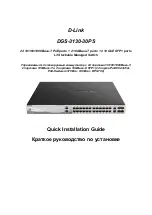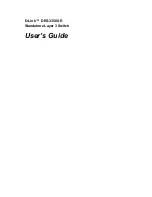
Read this manual before using this product.
Ÿ
For future reference, please keep this manual in a safe place.
Ÿ
This manual should be read in conjunction with the current catalogue.
1 SAFETY
1.1 General recommendation
These safety instructions are intended to prevent a hazardous situation and/or equipment damage. These instructions
indicate the level of potential hazard by label of "Caution", "Warning" or "Danger". To ensure safety of personnel and
equipment the safety instructions in this manual and the product catalogue must be observed, along with other
relevant safety practices.
CAUTION: Operator error could result in injury or equipment damage.
WARNING: Operator error could result in serious injury or loss of life.
DANGER:
In extreme conditions, there is a possible result of serious injury or loss of life.
WARNING
1. The compatibility of pneumatic equipment is the responsibility of the person who designs the pneumatic system or
decides its specifications.
Ÿ
Since the products specified here are used in various operating conditions,their compatibility for the specific
pneumatic system must be based on specifications or after analysis and/or tests to meet your specific
requirements.
2. Only trained personnel should operate pneumatically operated machinery and equipment.
Ÿ
Compressed air can be dangerous if an operator is unfamiliar with it Assembly, handling or repair of pneumatic
systems should be performed by trained and experienced operators.
3. Do not service machinery/equipment or attempt to remove component until safety is confirmed.
Ÿ
Inspection and maintenance of machinery/equipment should only be performed after confirmation of safe locked-
out control positions.
Ÿ
When equipment is to be removed, confirm the safety process as mentioned above. Switch off air and electrical
supplies and exhaust all residual compressed air in the system.
Ÿ
Before machinery/equipment is re-started, ensure all safety measures to prevent sudden movement of actuators
etc. (Supply air into the system gradually to create backpressure, i.e. incorporate a soft-start valve).
4. Contact SMC if the product is to be used in any of the following conditions:
Ÿ
Conditions and environments beyond the given specifications, or if product is used outdoors.
Ÿ
Installations in conjunction with atomic energy, railway, air navigation, vehicles, medical equipment, food and
beverage, recreation equipment, emergency stop circuits, press applications, or safety equipment.
Ÿ
Applications which have the possibility of having negative effects on people, property or animals.
Special safety analysis is required.
6. Avoid accumulation of iron waste or close contact with magnetic substances.
When a large amount of iron waste such as machining chips or spatter is accumulated, or a magnetic substance
(something attracted by a magnet) is brought into close proximity with an auto switch actuator, it may cause
auto switches to malfunction due to a loss of the magnetic force inside the actuator.
Maintenance
1. Perform the following maintenance periodically in order to prevent possible danger due to unexpected auto switch
malfunction.
1) Securely tighten switch mounting screws.
If screws become loose or the mounting position is dislocated, retighten them after readjusting the mounting
position.
2) Confirm that there is no damage to lead wires.
To prevent faulty insulation, replace switches or repair lead wires, etc., if damage is discovered.
Others
1. For durability against water, elasticity, application at welding site, please consult us.
2. If ON and OFF position (hysteresis) cause problems, please consult us.
3 MODEL INDICATION METHOD
This product is a Solid State Auto Switch of direct mounting specification of the installation PNP output type.
Switch should only be used in areas in which potentially explosive atmospheres are unlikely to be present or only
present for short periods of time.
4 INTENDED CONDITIONS OF USE
The auto switch should be used within the range of specifications below and the auto switch catalogue.
If labelled with X: special conditions applied:
Protect the autoswitch and cable against all impact or mechanical damage.
Protect the autoswitch from sources of heat which can generate surface temperatures higher than the temperature
classification.
Protect the autoswitch from direct sunlight or UV light using a suitable protective cover.
Installation and Maintenance Manual
Auto Switch (Solid State)
Series D-H7A2#-588
2 INSTALLATION AND OPERATING ENVIRONMENT
WARNING
Design and selection
1. Confirm the specifications.
Read the specifications carefully and use this product appropriately. The product may be damaged or malfunction
if it is used outside the range of specifications for load current, voltage, temperature or impact.
2. Take precautions when multiple actuators are used close together.
When multiple auto switch actuators are used in close proximity, magnetic field interference may cause the
switches to malfunction. Maintain a minimum actuator separation of 40mm.
3. Pay attention to the length of time that a switch is ON at an intermediate stroke position.
When an auto switch is placed at an intermediate position of the stroke and a load is driven at the time the
piston passes, the auto switch will operate, but if the speed is too great the operating time will be shortened and
the load may not operate properly. The maximum detectable piston speed is:
4. Keep wiring as short as possible.
Although longer wiring does not affect the function, please keep it to 100m or shorter.
5. Do not use a load that generates surge voltage.
Although a zener diode for surge protection is connected at the output side of a solid state auto switch, damage
may still occur if the surge is applied repeatedly. When a load such as a relay or solenoid which generates surge
is directly driven, use a type of switch with a built-in surge absorbing element.
6. Cautions for use in an interlock circuit
When an auto switch is used for an interlock signal requiring high reliability, devise a double interlock system to
avoid trouble by providing a mechanical protection function, or by also using another switch (sensor) together
with the auto switch.
Also perform periodic maintenance and confirm proper operation.
7. Ensure sufficient clearance for maintenance activities.
When designing an application, be sure to allow sufficient clearance for maintenance and inspections.
Mount / adjustment
1. Do not drop or bump.
Do not drop, bump or apply excessive impacts (1000m/s
2
or more for solid state switches) while handling.
Although the body of the switch may not be damaged, the inside of the switch could be damaged and cause a
malfunction.
2. Do not carry a actuator by the auto switch lead wires.
Never carry a actuator by its lead wires. This may not only cause broken lead wires, but it may cause internal
elements of the switch to be damaged by the stress.
3. Mount switches using the proper tightening torque.
If a switch is tightened beyond the range of tightening torque, the mounting screws, mounting brackets or switch
may be damaged. On the other hand, tightening below the range of tightening torque may allow the switch to
slip out of position.
WARNING
4. Mount a switch at the center of the operating range.
Adjust the mounting position of an auto switch so that the piston stops at the center of the operating range (the
range in which a switch is ON). (The mounting position shown in the catalog indicates the optimum position at
stroke end.) If mounted at the end of the operating range (around the borderline of ON and OFF), operation may
be unstable.
Wiring
1. Avoid repeatedly bending or stretching lead wires.
Broken lead wires can result from wiring patterns which repeatedly apply bending stress or stretching force to
the lead wires.
2. Confirm proper insulation of wiring.
Be certain that there is no faulty wiring insulation (contact with other circuits, ground fault, improper insulation
between terminals, etc.) Damage may occur due to excess current flow into a switch.
3. Do not wire with power lines or high voltage lines.
Wire separately from power lines or high voltage lines, avoiding parallel wiring or wiring in the same conduit with
these lines. Control circuits containing auto switches may malfunction due to noise from these other lines.
4. Do not allow short circuit of loads.
All models of PNP output type switches do not have built-in short circuit protection circuits. Note that if a load is
short circuited, the switch will be instantly damaged because of excess current flow into the switch.
*Take special care to avoid reverse wiring of the brown power supply line and the black output line on 3-wire
type switches.
5. Avoid incorrect wiring
If connections are reversed (power supply line + and power supply line -) on a 3-wire type switch, the switch will
be protected by a protection circuit. However, if the power supply line (+) is connected to the blue wire and the
power supply line (-) is connected to the black wire, the switch will be damaged.
Operating environment
1. Do not use in an area where a magnetic field is generated.
Auto switches can malfunction or magnets inside actuators can become demagnetized.
2. Do not use in an environment where the auto switch will be continually exposed to water.
Although switches satisfy IEC standard IP67 construction (JIS C 0920: watertight construction), avoid using
switches in applications where continually exposed to water splash or spray. Poor insulation or swelling of the
potting resin inside switches may cause malfunction.
3. Do not use in an environment with oil or chemicals.
Consult SMC if auto switches will be used in an environment with coolant, cleaning solvent, various oils or
chemicals. If auto switches are used under these conditions for even a short time, they may be adversely
affected by improper insulation, malfunction due to swelling of the potting resin, or hardening of the lead wires.
4. Do not use in an environment with temperature cycles.
onsult SMC if switches are used where there are temperature cycles other than normal air temperature changes,
as there may be adverse effects inside the switches.
5. Do not use in an area where surges are generated.
When there are units (solenoid type lifter, high frequency induction furnace, motor, etc.) which generate a large
amount of surge in the area around actuators with solid state auto switches, this may cause deterioration or
damage to the switches. Avoid sources of surge generation and crossed lines.
D-#S-TFI61GB-C
V[mm/s] =
Autoswitch operating range [mm]
Load operating time [ms]
X1000
D-H7A2 -588
Switch No.
Lead wire length
No number ---- 0.5m
L --------------- 3m
Z --------------- 5m
Suffix for
ATEX certified CAT.3
Piston moving
direction
Piston moving
direction
ON position
Hysteresis
OFF position
Wiring style
3 wire type
Output style
PNP type
Application
IC,24VDC Relay,PLC
Source voltage
5,12,24V DC (4.5 to 28V DC)
Current consumption
10mA or less
Load current
40mA or less
Internal voltage drop
0.8V or less
Leak current
100 µA or less at 24V DC
Operating time
1ms or less
Operating indicator
Red LED lights when ON
Impact resistance
1000m/s
2
Insulation resistance
50M
W
or more at DC500V mega
Witstand voltage
AC1000V for 1 minute (lead wire, between cases)
Ambient temperature
-10 to 60°C
Protection structure
IP67 IEC60529, JISC0920
D-H7A2
PC-588
Switch No.
Pre-wired connector
Connector pin assigment
A ---- M8-3pin connector
B ---- M8-4pin connector
D ---- M12-4pin connector
Suffix for
ATEX certifled CAT.3
Lead wire length
S --------------0.5m
M -------------- 1m
II 3G Ex nA II T5 X -10
º
C≤Ta≤+60
º
C
II 3D tD A22 IP67 T93
º
C X
CPP`
II 3G Ex nA II T5 X -10°C ≤ Ta ≤ +60°C
II 3D tD A22 IP67 T93°C X
Equipment Group II
Category 3
Gas (G) and Dust (D) environment
Ex - European standards apply
nA - Non-sparking apparatus
II - for all types of gas
T5 - temperature classification
tD - protected by enclosure
A22 - for zone 22
IP67 - Protection structure
Ta - Ambient temperature
T93°C – max. surface temperature
X - special conditions apply,
see instructions
ATEX Marking Description




















